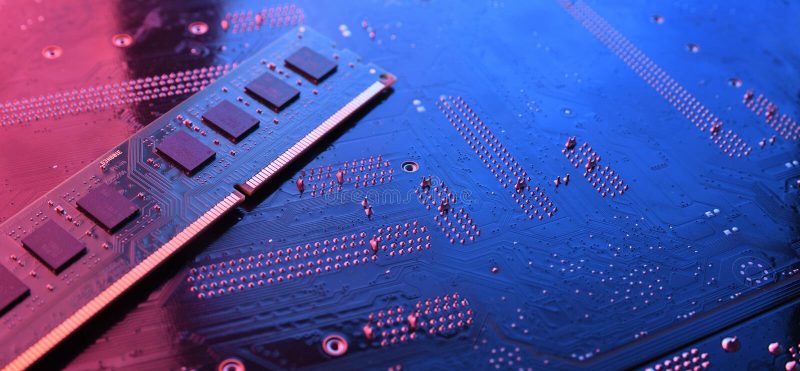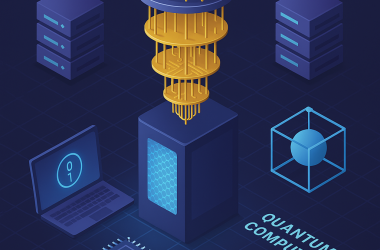Table of Contents Show
If you’re looking to build a gaming PC, upgrade an existing machine, or just do a little research into what components go into creating your computer, then you’ll have come across RAM. This essential part of your machine is effectively a short-term memory bank; it stores information regarding what your PC wants to do on a moment-to-moment basis and executes that task. RAM, in case you were wondering, is short for ‘random access memoryâ, because your PC can access and read any part of it in any order.
You may also have come across the term ‘DDRâ, which stands for ‘Double Data Rateâ. We’re getting into technicalities here, so we’ll try to step back a little and focus on the bigger picture, but in short, the DDR system succeeded the SDR (Single Data Rate) system, providing faster memory. Needless to say, no PC uses SDR anymore, but the protocol has reached DDR5, so you might be wondering whether your computer needs DDR5 or whether DDR4 will suffice. Let’s take a look at some direct comparison points between the two!
DDR5 is faster
The key difference between DDR5 and DDR4 RAM is that DDR5 is much faster. Generally speaking, it’s possible for DDR5 to perform up to 50% faster than DDR4; it has a higher clock speed, which means that it runs faster, and it also has a superior data transfer rate, meaning your computer can pass information to the RAM faster than it could for DDR4. Without getting into the numbers, it’s safe to say that if you want the fastest and most powerful RAM around right now, you need to opt for DDR5.
DDR5 supports higher capacities
How much RAM do you have in your computer right now? If you don’t know, you can run a system check to find out. Most computers top out at around 32GB of RAM, with 64GB needed for more demanding applications or up-to-the-minute games. DDR4 RAM sticks support up to 64GB of capacity, while DDR5 can go up to 512GB per stick. In theory, this means that if you slotted four DDR5 sticks, you could have an incredible 2TB of RAM.
Of course, this isn’t practical, at least not yet. Most modern processors don’t allow you to go beyond 128GB of RAM in total, so even if you do buy massive DDR5 sticks, you won’t actually be able to use them. However, this does allow you to potentially buy a single DDR5 128GB stick and slot that, keeping your other slots free for future upgrades and expansions.
DDR5 isn’t supported by most processors
Unless you’re buying an up-to-the-minute processor, like the AMD 6000 series or the Intel 13th-gen processor (or the 12th-gen model), you’re not going to find extensive DDR5 support. DDR4, meanwhile, is supported by pretty much every processor out there, including the ones we listed above, which means that if you’re worried about compatibility – particularly with older machines – then you’re definitely better off opting for DDR4 RAM. However, if you know you’re only going to be buying the latest and greatest processors and motherboards, then it’s safe to plump for DDR5.
DDR5’s performance gains are disputed
In benchmark tests performed by USA Today, the site found that although DDR5 showed performance gains in some areas, it was indistinguishable from DDR4 (and, in fact, sometimes worse than DDR4) in others. For instance, when testing DDR5 RAM in a gaming context with an Nvidia graphics card, USA Today found that some games ran much slower – with an up to 20 fps drop – when using DDR5 RAM.
However, it’s not all doom and gloom. USA Today also found that DDR5 performed better with 3D rendering programs like Blender and Cinebench. When using those programs, test scenes ran ‘one to two minutes faster’on the DDR5 system. Generally speaking, though, if you’re just going to be using your system for gaming, then you likely won’t notice a massive performance improvement between DDR5 and DDR4.
DDR5 will eventually become the standard
As the next major protocol in RAM, DDR5 will definitely become industry standard before too long. Eventually, the time will come at which you’re not able to buy DDR4 RAM anymore, or your motherboard will no longer support it. However, that time is likely to be a long way away. Modern Intel and AMD boards still support DDR4 RAM, after all. Still, if you’re concerned about ‘future-proofing’your machine (to the extent that such a thing is possible at all), then you should opt for DDR5, because the time will eventually come when DDR4 RAM is no longer accepted by your processor.
Should you upgrade to DDR5 or wait?
In the end, the decision regarding whether or not to upgrade to DDR5 can only be yours. However, our recommendation is that you wait, at least for now. If you’re building a brand new system and money is no object, then it makes sense to slot DDR5 RAM into the motherboard rather than DDR4, just for the sake of keeping things as up-to-date as possible.
However, if your existing system is running DDR4 memory and you’re worried about DDR5 making it obsolete, you needn’t be. DDR4 memory is likely to be supported by motherboards for a while to come, and even when it isn’t, the upgrade will be incremental at first, so you won’t lose too much performance by sticking with DDR4 for the foreseeable future.









